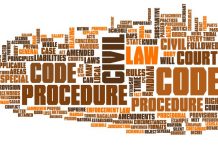This article is written by Ms. Kishita Gupta from the United world School of Law, Karnavati University, Gandhinagar. This article talks about the theories of rights along with an overview of Hohfeld’s analysis of rights.
Table of Contents
Introduction
The term that appears most frequently in legal discourse is ‘right’, but it proves to be the most elusive in terms of its meaning. The law is a right established by an authority above the party whose purpose is to arbitrate between diverse claims and harmonise them as a whole, whereas a right is typically defined as what a man considers to be a right from his point of view. In this article, the author has briefly discussed the analysis of rights by the eminent jurist Hohfeld. In the later stage of the article, the will theory and the interest theory are also discussed briefly.
About Hohfeld – a biographical note
Wesley Newcomb Hohfeld was born in California in 1879 and died in 1918. He graduated from the University of California and then became the editor of the Harvard Law Review while at Harvard Law School, where he graduated in 1904. Hohfeld taught at Stanford Law School for a short time before moving to Yale Law School, where he remained until he died in 1918.
“Fundamental Legal Conceptions as Applied in Judicial Reasoning and Other Legal Essays” was his seminal work (1919). The book, together with two pieces published in the Yale Law Journal in 1913 and 1917, encapsulates the majority of Hohfeld’s jurisprudence.
Hohfeld’s analysis continues to be a significant contribution to our current understanding of the nature of rights. A chair at Yale University is named after Hohfeld to honour his enduring importance. Hohfeld’s theories are still relevant today, even after a century has passed since his death and traces of his theories are also evident in the Indian legal justice system.
A primer to Hohfeld’s analysis
A ‘right’, according to Hohfeld, is a legal interest that imposes a correlative duty. “If X has a right against Y to keep off the latter’s land, the correlative (and equivalent) is that Y has an obligation toward X to stay off the place”, Hohfeld says. In the same way that a ‘privilege’ imposes a comparable and correlative no-right, power imposes a correlative liability and immunity, resulting in handicap. The contrast between a right and a privilege is particularly important in this regard.
He points out that the term ‘right’ was frequently used to refer to a variety of other legal interests such as powers, privileges, and immunities. This issue was so common that Hohfeld was able to obtain enough court support in his article to acknowledge it. As a solution, Hohfeld proposes separating rights, privileges, powers, and immunities, all of which he considers to be separate legal interests. Surprisingly, he tries to make this distinction based on the legal duties that these interests place on another organisation. Hohfeld’s definition methodology is based on the usage of correlatives and opposites.
Because the most fundamental legal relationships are sui generis, attempts at formal definition are inevitably unsatisfying, if not completely futile. As a result, the most promising course of action appears to be to display all of the numerous relations in a scheme of ‘opposites’ and ‘correlatives’, and then to demonstrate their unique breadth and application in real examples.
Hofeld’s analysis is majorly based on Salmond’s earlier system. According to Salmond, there are three categories of rights:
- Rights in the strict sense, which are defined as interests protected by the law by imposing its duties with respect to the rights upon other persons,
- Liberties are defined as “interests of unrestrained activity”,
- Powers “when the law actively assists me in making my will effective”.
Jural relations
Hohfeld’s dissatisfaction with the premise that all legal relations may be reduced to rights and duties led to the eight fundamental legal concepts. This was identified as the most significant impediment to understanding and successful resolution of legal challenges. His notion of jural relations can be explained through the below-mentioned table:
Image Source: Ivana Tucak, Rethinking Hohfeld’s Analysis of Legal Rights, 25 PRAVNI Vjesnik 31 (2009).
The vertical arrows connect jural correlatives, or ‘two legal positions that entail each other,’ whereas the diagonal arrows connect jural opposites, or ‘two legal positions that deny each other.’
Rights and duties
Hohfeld did not devote much attention to the relationship between rights and duties. According to him, the term ‘rights’ is mistakenly applied to something that may be a privilege, a power, or immunity in some cases, but is not a right in the strictest sense. The correlative (and equivalent) ‘obligation’ provides a method for limiting the word ‘right’ to its specific and most appropriate meaning. Legal rights are always accompanied by legal obligations. This pair of phrases convey the same legal relationship but from two different perspectives. Hohfeld used the example of X having a right against Y to keep off of X’s land. The invariable corollary of this is that Y has a duty to X to keep off X’s territory. According to Hohfeld, the word ‘claim’ is the most accurate and adequate synonym for the word ‘right’ in terms of meaning. If necessary, state coercion is used to enforce a valid right or claim.
Being granted or having a legal right (or a claim, according to Hohfeld) entails legal protection from other people’s interference or refusal to provide aid or recompense in connection with a certain action or state of things. A person who is supposed to refrain from interfering or give aid or remuneration has a responsibility to do so. A legal position deriving from the imposition of responsibility on someone else is known as a right or claim.
Privileges and no-rights
The term liberty is preferred by the majority of future jurists over the phrase privilege. These two terms occupy the same structural position in Hohfeld’s theory, notwithstanding Hohfeld’s preference for the term privilege. Privileges are permissions to act in a given way without being held liable for the harm caused to others who, at the same time, are unable to ask the authorities to intervene. “To the degree that the defendants have privileges, the plaintiffs have no rights”, Hohfeld said. There can’t be a conflict between rights (claims) and privilege. The correlation of this legal relationship demonstrates that the person against whom liberty is asserted has no right to the conduct to which liberty pertains. This does not, however, rule out the possibility of him interfering with the action.
Hohfeld agreed that under legal systems, liberties that are not accompanied by responsibilities imposed on others to avoid interference with legal action exist, and that there are often strong political reasons for doing so. When someone is granted legal liberty, he relieves legislators of the burden of imposing a duty on others. When deciding whether or not to apply the above requirements in a specific circumstance, a rational legislator may take advantage of political concerns.
For example, the fundamental rights mentioned in Part III of the Indian Constitution, are in fact the ‘privileges’ mentioned by Hohfeld as they provide that the State has a correlative ‘no-right’ to interfere in the exercise of these freedoms.
Powers and liabilities
The first two pairs of legal positions (right/duty and liberty/no-right) are first-order relations, while the following two pairs (power/liability and immunity/disability) are second-order relations. Some first-order relations are directly applied to human behaviour and social interactions without the use of any second-order relations. All second-order relations, on the other hand, are applied directly to human entitlements and only indirectly to human behaviour and social interactions.
According to Hohfeld, a jural relationship can be modified in two ways: by facts that are not under the volitional control of one or more people, or by facts that are under the volitional control of human beings. He defined powers in terms of the second group of circumstances, in which a person with the dominant volitional control has the legal authority to change jural relations in a specific way. This relationship is held between two people with respect to certain actions or conditions of events, similar to other jural interactions. Hohfeld gave several instances of legal powers, including property-related powers (property abandonment and ability to transfer property), contractual obligation-creating capabilities, and the establishment of an agency relationship. Susceptibility to someone exercising power is defined as liability. Deference to a shift in a person’s entitlement isn’t always unpleasant. A promisee, like an inheritor, may profit from an entitlement conferred by a promisor.
When it comes to liability, Hohfeld brought up the issue of those who work in ‘public callings’ like innkeepers. Rather than the common perception that innkeepers have a duty to all other parties, Hohfeld stressed that an innkeeper has liability and that travellers have a correlative authority. As a result, travellers have the legal authority to bind an innkeeper to accept them as guests by submitting an acceptable tender. If jurists conflated Hohfeldian powers with rights, there would be a lot of uproars. Simmonds gives an example of how power can be linked with a duty not to exercise it, such as when a nonowner has the authority to transfer title to a bona fide purchaser but will commit an infraction while doing so. If we use the word ‘right’ to define the power, we must declare that the non-owner has the right to sell the property.
Immunity and disability
Immunity refers to the state of not being able to have one’s rights altered by another. A lack of power to change legal entitlements is defined as a disability. The basic difference between powers and immunities is the same as the general contrast between rights and privileges. A right is an affirmative claim against someone else, whereas a privilege is someone’s exemption from someone else’s right claim. Similarly, power is someone’s affirmative control over a specific jural relation about another, whereas immunity is someone’s independence from another’s legal power or control over some jural relations.
For example, if A enjoys immunity against B, B is limited in his or her ability to exercise powers relating to the immunity’s covered entitlements. Immunity rights are a common occurrence in constitutional texts. As a result, if the people are guaranteed freedom of speech by the Constitution, the legislature cannot wield any power in this regard. While the legislature is disabled, the people have immunity rights to freedom of speech.
Criticism of Hohfield’s theory of rights
W. N. Hohfeld’s legal rights analysis has been lauded as a model of conceptual clarity and rigour that everyone interested in the nature of legal rights and liberties should study. Hohfeld illustrates how numerous conceptions usually referred to as legal rights are related, providing a useful tool for comprehending conversation that uses legal rights terminology. However, despite the fact that numerous legal philosophers have praised and commended Hohfeld’s analysis, it has not been included. The ambiguity that Hohfeld intended to clarify still exists today, and hence, his analysis can be utilised to improve the quality of legal discourse by preventing judges and other lawyers from making conceptual errors that they would otherwise make.
The common conflation of rights and liberties can lead to erroneous inferences and conceptual mistakes in the law. For example, if one believes that the right to free speech is a right (in the strict sense) when it is actually liberty, one will incorrectly believe that others have noninterference duties that are correlative to this ‘right.’ This is one of the clearest examples of liberty that is not secured by equivalent obligations, according to Glanville Williams. Surely, he claims, no one owes him a duty to help him with his speech, to provide a platform for him to talk from, or to maintain silence while I speak. The responsibilities that may be attributed to him as a result of his ‘right’ to free speech have nothing to do with it. Persons must, of course, refrain from gagging him or removing him from the podium while he was speaking.
These obligations, however, are not related to the ‘right’ to free speech, according to Williams, but are merely part of the standard responsibility not to commit a battery. As a result, no duties are owed to an individual who exercises his ‘right’ to free speech that is not already assigned to him under his other rights. As a result, Williams contends that describing freedom of expression as a legal right is incorrect: it is only legal liberty.
The requirement of two people for Hohfeldian analysis of rights
As previously stated Hohfeld owned all rights to be relations between two distinct individuals. As a result, as per his analysis, there is no such thing as a “right to bodily integrity”. Rather, one person (“X”) has a claim-right to a certain content against another person (“Y”) (insofar as this is, in part, a claim-right). As the indefinite article suggests, there are as many rights as there are individual people who hold them multiplied by the number of individual people who hold them against whom they are held. That’s a lot of privileges.
Hohfeld’s only concession to ordinary thought’s conflation of these rights into one is to recommend that rights of similar substance that one person holds against many persons be referred to as “paucital rights”, and rights of similar content that one holds against all people as “multital rights” (Hohfeld suggested that a right be dubbed an “unital right” if it has no similarly contented cousins). However, these are essentially categories of rights based on their content relationships with other rights; notwithstanding these classifications, Hohfeld’s basic atomic rights exist exclusively between two individuals.
Hohfeld’s Primary Correlativity Claim
The two correlativity arguments made by Hohfeld are crucial to his rights analysis. While the focus of the main criticism of Hohfeld is on the following section on his secondary correlativity thesis (that the correlative of an active right is only the absence of a passive right in another), others have questioned whether Hohfeld’s primary correlativity claim (that the correlative of every passive right is a duty on the part of others to perform the act that is the content of the passive right) is true. This more radical critique of correlativity takes two forms. One approach is to deny the universality of rights/duties correlativity in all viable moral theories, and consequently the necessity of it.
Functions of right – Will theory and Interest theory
In jurisprudence, there are two main theories of the function of rights:
- The will theory, and
- The interest theory.
Will theory
H.L.A Hart is said to have founded the concept of the will theory of rights, which is also known as choice theory. Will theorists argue that having a right makes you a ‘small-scale sovereign’? A will theorist, for example, claims that the purpose of a right is to give its possessor power over another’s responsibility. The will theorist claims that your property right, depicted in the diagram above, is a right since it includes the ability to waive (or cancel, or transfer) the duties of others. You have ‘sovereignty’ over your computer, which means you have the option of allowing others to touch it or not. A promisee is similarly ‘sovereign’ over the promisor’s actions: a promisee has a right because he can waive (or annul) the promisor’s obligation to maintain the promise.
Criticism of the will theory
While jurists such as Kant, Hegel & Hume supported this theory, it was fairly criticised by Duguit. According to him, the law is based on an objective will rather than a subjective will. The law’s goal is to protect only those acts that contribute to social cohesion. He went on to say that the concept of subjective right is a metaphysical construct.
Interest theory
However, the theorists of interest theory disagree. The function of a right, according to interest theorists, is to serve the right interests. According to the interest theorist, an owner has a right not because he or she has a choice, but because possession benefits the owner. The promisees have a right because they have an interest in the promise’s fulfilment or (alternatively) in the ability to make voluntary ties with others. Your rights, according to the interest theorist, are the Hohfeldian happenings that are beneficial to you. Jeremy Bentham is known to have initiated the interest in the theory of rights.
Criticism of the interest theory
Salmond criticised the interest theory, claiming that the state does not protect the interest. It is necessary for the state to safeguard and recognise an interest in order to grant a legal right. While Gay claims that this approach is partially valid because a legal right is not an interest in and of itself, but rather serves to defend an individual’s interests. He also claimed that legal rights impart the right to do a certain act/to refrain on a person by imposing a legal duty on them through the ‘state’s’ legal agency. On the other hand, Dr Allen viewed that it might be claimed that neither theory is opposed to the other; rather, it is a synthesis of the two. He attempted to reconcile these two views by pointing out that the core of legal right appears to be the legally guaranteed power to realise an interest, rather than legally guaranteed power in and of itself. Both views, it might be stated, are necessary components of the legal right.
Analysis of the functions of right
Each rights theory, including interest and will, has three features:
- An ultimate purpose that all rights (or at least those covered by the particular version of the theory) purport to serve;
- Means of protecting or effecting that purpose, such as imposing duties on other parties, including enforcement mechanisms, and so on;
- Specifying which candidates constitute rights, i.e., which types of normative positions (e.g., Hohfeldian claims, liberties, and so on).
Conclusion
Hohfeld not only corrected small technical errors but also provided a significant critique of the past legal rights and liberties notions. Finally, there is the issue of Hohfeld’s scheme’s utility. The debate over Hohfeld’s scheme of jural relations has proven to be one of the most complicated in legal analytical history. The process of assessing its utility and relevance is still in progress. Hohfeld had analysed the fundamental grounds of our legal theories and institutions, as well as the foundations of our rights theories, when developing his analytical approach. Hohfeld’s study entailed a detailed and an in-depth analysis in which he attempted to reflect people’s genuine beliefs about rights. As a result, Hohfeld’s analysis is of essential practical significance, despite its analytical nature. As he points out, appropriate analysis is required for proper practical application, and “the deeper the study, the greater one’s understanding of the law’s wholeness and harmony”.
References
- Hohfeldian Analysis — Application of, by the Indian Judiciary : A Lawyer’s Perspective (2012) 10 SCC J-17
- http://classic.austlii.edu.au/au/journals/MurUEJL/2005/9.html
- Ivana Tucak, Rethinking the Hohfeld’s Analysis of Legal Rights, 25 PRAVNI Vjesnik 31 (2009).
- https://thefactfactor.com/facts/law/legal_concepts/jurisprudence/theories-of-legal-rights/17474/
- The Inadequacy of Hohfeld’s Scheme: Towards a More Fundamental Analysis of Jural Relations 27 JILI (1985) 117
- https://engagedscholarship.csuohio.edu/cgi/viewcontent.cgi?article=2997&context=clevstlrev
- Hohfeld’s Analysis of Rights | The Lawyers & Jurists
Students of Lawsikho courses regularly produce writing assignments and work on practical exercises as a part of their coursework and develop themselves in real-life practical skills.
LawSikho has created a telegram group for exchanging legal knowledge, referrals, and various opportunities. You can click on this link and join:
Follow us on Instagram and subscribe to our YouTube channel for more amazing legal content.
 Serato DJ Crack 2025Serato DJ PRO Crack
Serato DJ Crack 2025Serato DJ PRO Crack











 Allow notifications
Allow notifications



